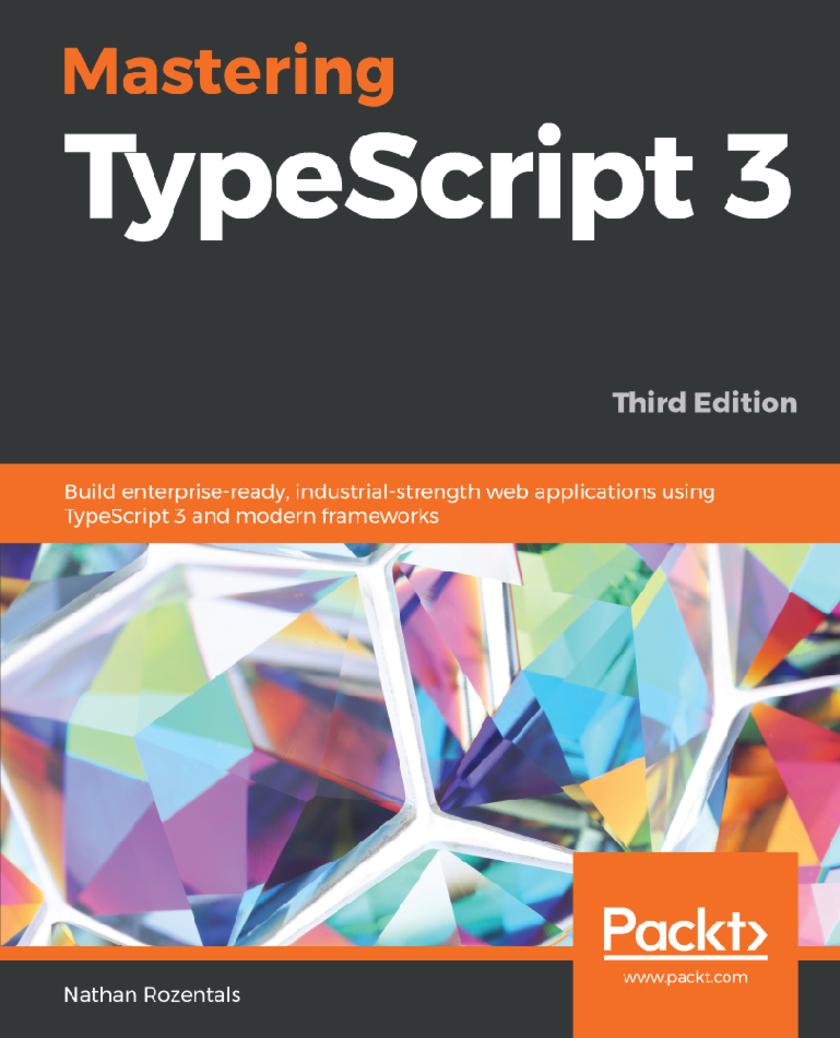
Mastering TypeScript 3
¥90.46
Master the TypeScript language and its latest features. Explore modern application frameworks and utilize industry best practices in TDD, OOP and UI Design. Key Features * Learn the key features of TypeScript 3 and explore advanced language features through in-depth discussions. * Use TypeScript with modern frameworks including Backbone, Angular, Aurelia, React, and Node. * Explore TDD practices, OOP techniques, and industry best practices to create high-quality, modular, and adaptable applications. Book Description TypeScript is both a language and a set of tools to generate JavaScript. It was designed by Anders Hejlsberg at Microsoft to help developers write enterprise-scale JavaScript. Starting with an introduction to the TypeScript language, before moving on to basic concepts, each section builds on previous knowledge in an incremental and easy-to-understand way. Advanced and powerful language features are all covered, including asynchronous programming techniques, decorators, and generics. This book explores many modern JavaScript and TypeScript frameworks side by side in order for the reader to learn their respective strengths and weaknesses. It will also thoroughly explore unit and integration testing for each framework. Best-of-breed applications utilize well-known design patterns in order to be scalable, maintainable, and testable. This book explores some of these object-oriented techniques and patterns, and shows real-world implementations. By the end of the book, you will have built a comprehensive, end-to-end web application to show how TypeScript language features, design patterns, and industry best practices can be brought together in a real-world scenario. What you will learn * Gain insights into core and advanced TypeScript language features * Integrate existing JavaScript libraries and third-party frameworks using declaration files * Target popular JavaScript frameworks, such as Angular, React, and more * Create test suites for your application with Jasmine and Selenium * Organize your application code using modules, AMD loaders, and SystemJS * Explore advanced object-oriented design principles * Compare the various MVC implementations in Aurelia, Angular, React, and more Who this book is for This guide to the TypeScript that starts with basic concepts, and then builds on this knowledge to introduce more advanced language features and frameworks. No prior knowledge of JavaScript is required, although some prior programming experience is assumed. If you are keen to learn TypeScript, this book will give you all of the necessary knowledge and skills to tackle any TypeScript project. If you are already an experienced JavaScript or TypeScript developer, then this book will take your skills to the next level. Learn how to use TypeScript with a multitude of modern frameworks, and choose the best framework for your project requirements. Investigate techniques for Test Driven Development, explore industry-standard design patterns, and learn how to put together a full production-ready TypeScript application.
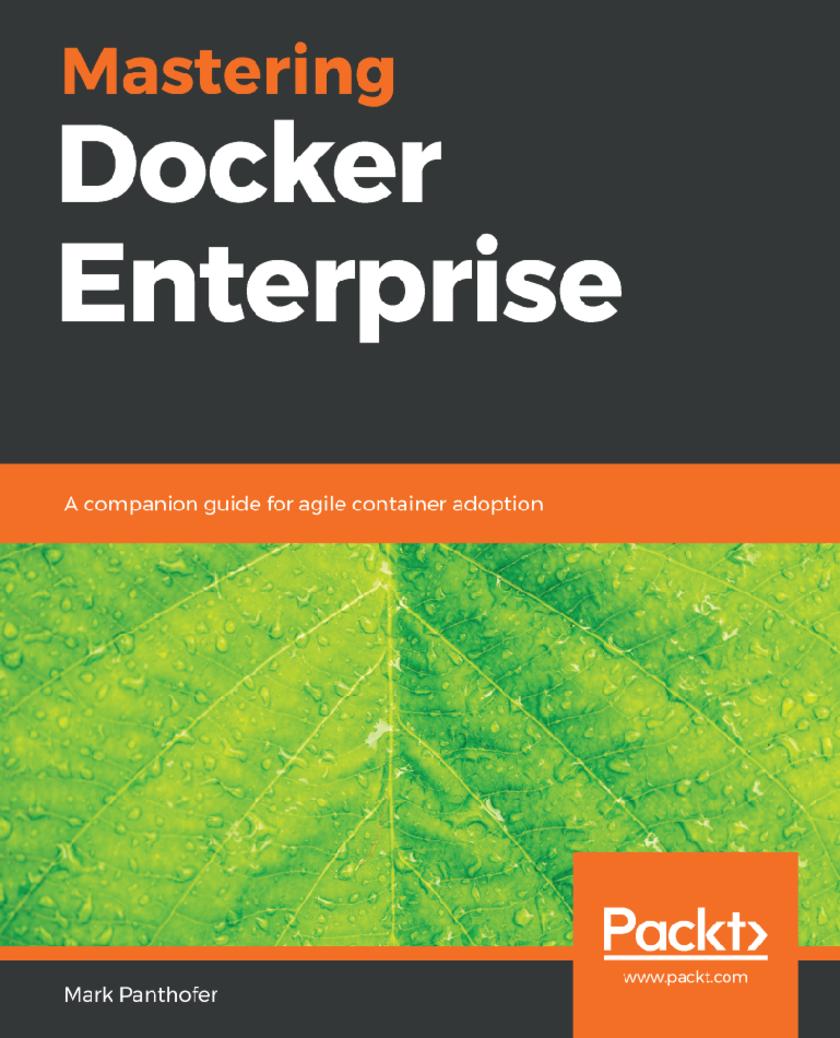
Mastering Docker Enterprise
¥90.46
A journey toward containerized applications in production with a cloud-portable, secure, robust and highly available Docker Enterprise platform. Key Features * Get an insider’s view into the container movement and Docker Enterprise * Manage the transformation associated with enterprise container adoption * Walk through the enterprise container adoption journey Book Description While known mostly as the open source engine behind tens of millions of server nodes, Docker also offers commercially supported enterprise tooling known as the Docker Enterprise. This platform leverages the deep roots from Docker Engine - Community (formerly Docker CE) and Kubernetes, but adds support and tooling to efficiently operate a secure container platform at scale. With hundreds of enterprises on board, best practices and adoption patterns are emerging rapidly. These learning points can be used to inform adopters and help manage the enterprise transformation associated with enterprise container adoption. This book starts by explaining the case for Docker Enterprise, as well as its structure and reference architecture. From there, we progress through the PoC,pilot and production stages as a working model for adoption, evolving the platform’s design and configuration for each stage and using detailed application examples along the way to clarify and demonstrate important concepts.The book concludes with Docker’s impact on other emerging software technologies, such as Blockchain and Serverless computing. By the end of this book, you’ll have a better understanding of what it takes to get your enterprise up and running with Docker Enterprise and beyond. What you will learn * Understand why containers are important to an enterprise * Understand the features and components of Docker Enterprise 2 * Find out about the PoC, pilot, and production adoption phases * Get to know the best practices for installing and operating Docker Enterprise * Understand what is important for a Docker Enterprise in production * Run Kubernetes on Docker Enterprise Who this book is for This book is for Software Architects, DevOps Engineers, Tech Ops, Docker professionals, or any IT professional working with Docker and containers who wants to move containerized workloads to production. This book discusses the enterprise adoption of Docker and Kubernetes,therefore a basic understanding of Docker concepts will be helpful.
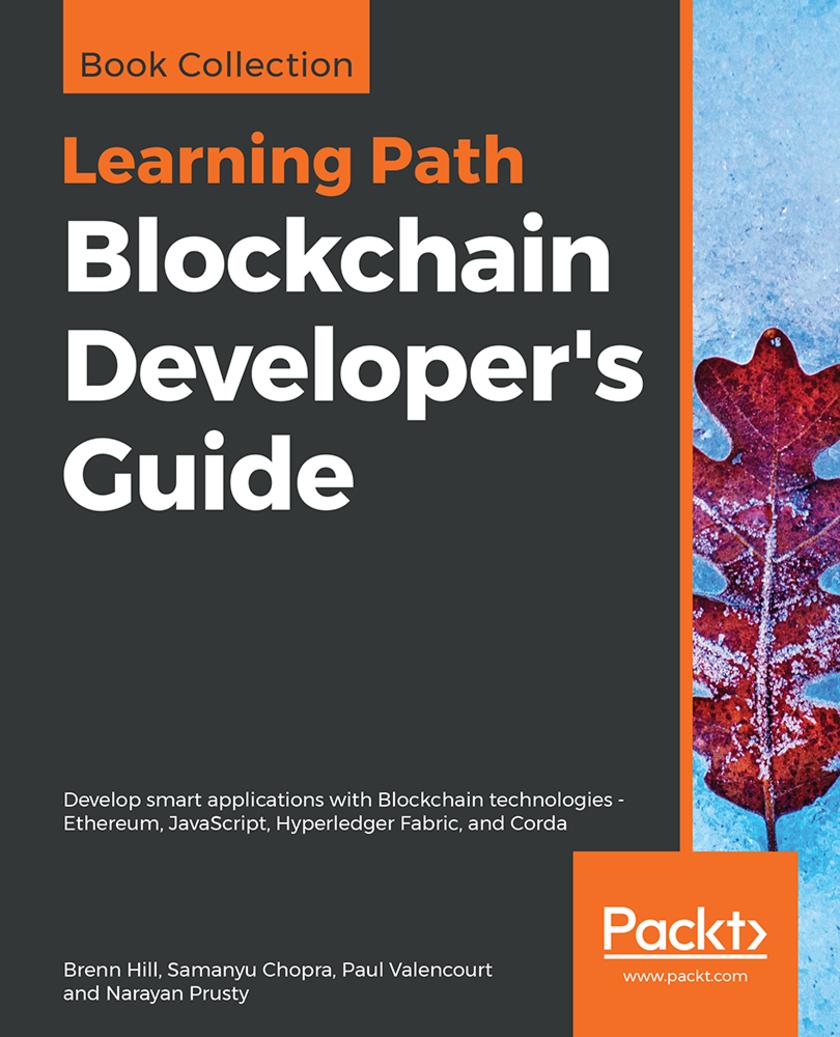
Blockchain Developer's Guide
¥90.46
Build real-world projects like a smart contract deployment platform, betting apps, wallet services, and much more using blockchain Key Features *Apply blockchain principles and features for making your life and business better *Understand Ethereum for smart contracts and DApp deployment *Tackle current and future challenges and problems relating to blockchain Book Description Blockchain applications provide a single-shared ledger to eliminate trust issues involving multiple stakeholders. It is the main technical innovation of Bitcoin, where it serves as the public ledger for Bitcoin transactions. Blockchain Developer's Guide takes you through the electrifying world of blockchain technology. It begins with the basic design of a blockchain and elaborates concepts, such as Initial Coin Offerings (ICOs), tokens, smart contracts, and other related terminologies. You will then explore the components of Ethereum, such as Ether tokens, transactions, and smart contracts that you need to build simple DApps. Blockchain Developer's Guide also explains why you must specifically use Solidity for Ethereum-based projects and lets you explore different blockchains with easy-to-follow examples. You will learn a wide range of concepts - beginning with cryptography in cryptocurrencies and including ether security, mining, and smart contracts. You will learn how to use web sockets and various API services for Ethereum. By the end of this Learning Path, you will be able to build efficient decentralized applications. This Learning Path includes content from the following Packt products: *Blockchain Quick Reference by Brenn Hill, Samanyu Chopra, Paul Valencourt *Building Blockchain Projects by Narayan Prusty What you will learn *Understand how various components of the blockchain architecture work *Get familiar with cryptography and the mechanics behind blockchain *Apply consensus protocol to determine the business sustainability *Understand what ICOs and crypto-mining are, and how they work Who this book is for Blockchain Developer's Guide is for you if you want to get to grips with the blockchain technology and develop your own distributed applications. It is also designed for those who want to polish their existing knowledge regarding the various pillars of the blockchain ecosystem. Prior exposure to an object-oriented programming language such as JavaScript is needed.
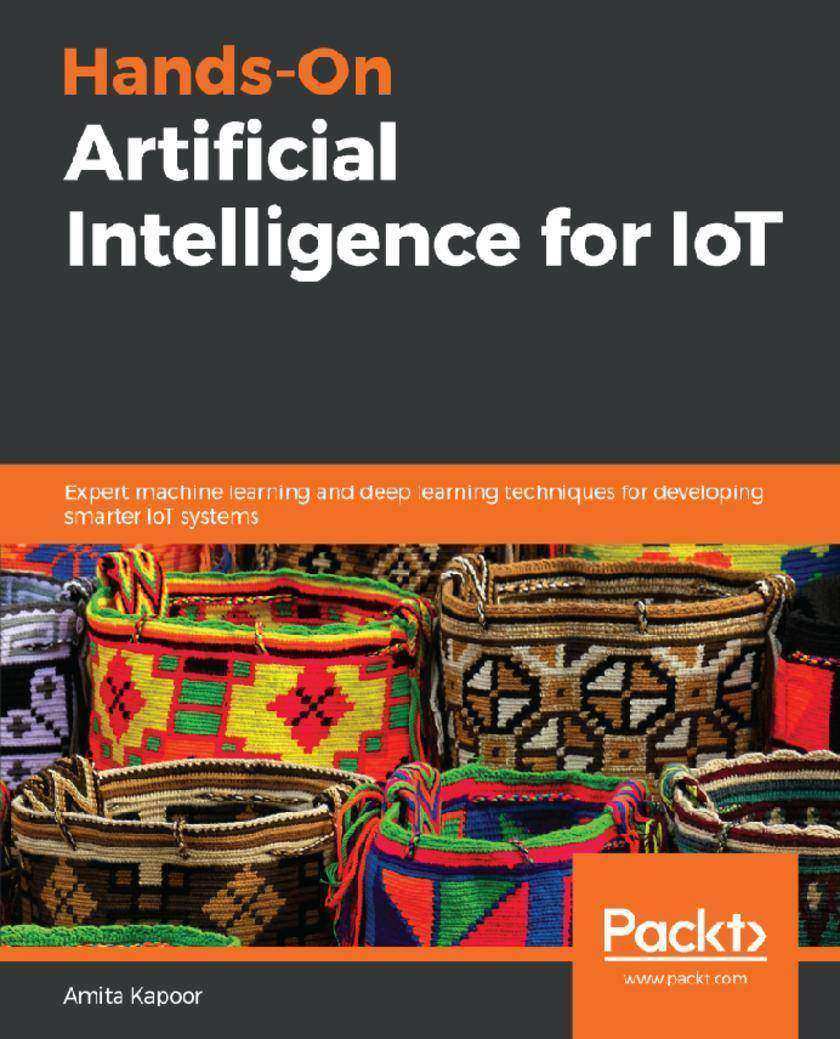
Hands-On Artificial Intelligence for IoT
¥90.46
Build smarter systems by combining artificial intelligence and the Internet of Things—two of the most talked about topics today Key Features * Leverage the power of Python libraries such as TensorFlow and Keras to work with real-time IoT data * Process IoT data and predict outcomes in real time to build smart IoT models * Cover practical case studies on industrial IoT, smart cities, and home automation Book Description There are many applications that use data science and analytics to gain insights from terabytes of data. These apps, however, do not address the challenge of continually discovering patterns for IoT data. In Hands-On Artificial Intelligence for IoT, we cover various aspects of artificial intelligence (AI) and its implementation to make your IoT solutions smarter. This book starts by covering the process of gathering and preprocessing IoT data gathered from distributed sources. You will learn different AI techniques such as machine learning, deep learning, reinforcement learning, and natural language processing to build smart IoT systems. You will also leverage the power of AI to handle real-time data coming from wearable devices. As you progress through the book, techniques for building models that work with different kinds of data generated and consumed by IoT devices such as time series, images, and audio will be covered. Useful case studies on four major application areas of IoT solutions are a key focal point of this book. In the concluding chapters, you will leverage the power of widely used Python libraries, TensorFlow and Keras, to build different kinds of smart AI models. By the end of this book, you will be able to build smart AI-powered IoT apps with confidence. What you will learn * Apply different AI techniques including machine learning and deep learning using TensorFlow and Keras * Access and process data from various distributed sources * Perform supervised and unsupervised machine learning for IoT data * Implement distributed processing of IoT data over Apache Spark using the MLLib and H2O.ai platforms * Forecast time-series data using deep learning methods * Implementing AI from case studies in Personal IoT, Industrial IoT, and Smart Cities * Gain unique insights from data obtained from wearable devices and smart devices Who this book is for If you are a data science professional or a machine learning developer looking to build smart systems for IoT, Hands-On Artificial Intelligence for IoT is for you. If you want to learn how popular artificial intelligence (AI) techniques can be used in the Internet of Things domain, this book will also be of benefit. A basic understanding of machine learning concepts will be required to get the best out of this book.
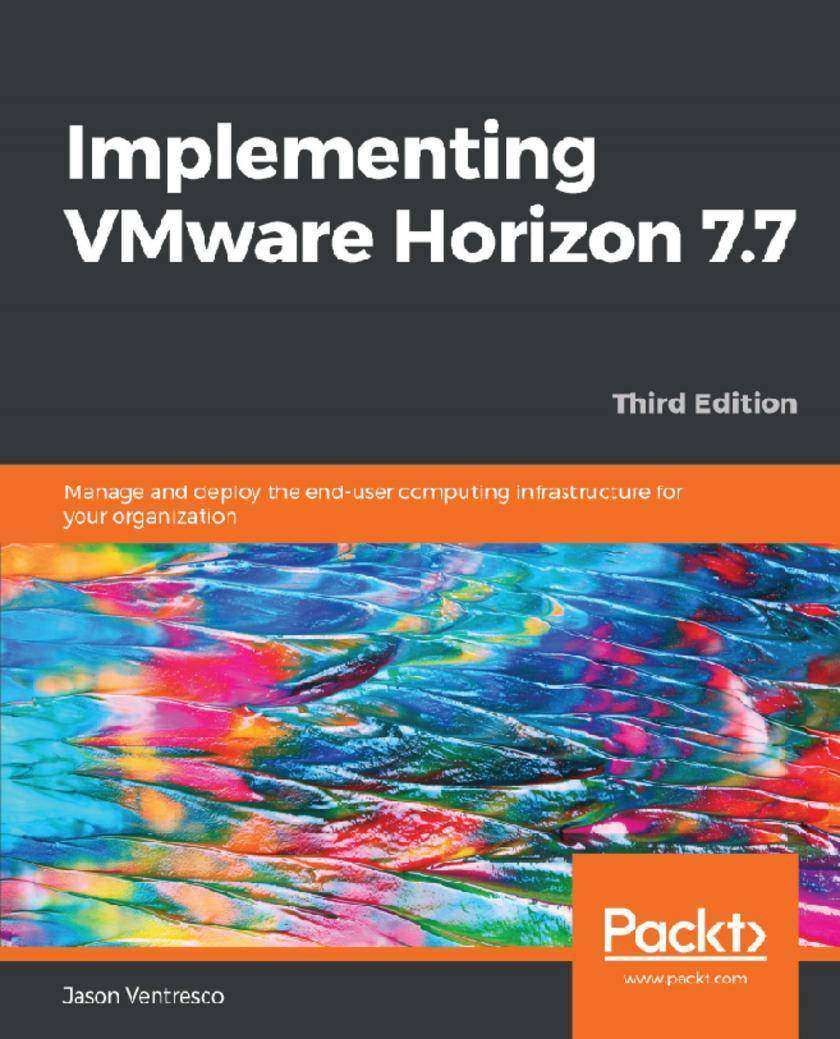
Implementing VMware Horizon 7.7
¥90.46
Effectively implement features and components for any computing environment Key Features *Explore the latest features of VMware Horizon 7.7 *Virtualize your desktop infrastructure using new features introduced in Horizon *Implement App Volumes and User Environment Manager in your infrastructure Book Description This third edition of Implementing VMware Horizon 7.7 has been updated to get you up to speed with VMware Horizon 7.7 by showing you how to use its key features and deploying an end-user computing infrastructure for your own organization. The book begins by guiding you on how to deploy all the core requirements for a VMware Horizon infrastructure. It then moves on to show you how to provision and administer end-user computing resources using VMware Horizon. You’ll not only be able to deploy the core VMware Horizon features, but you’ll also be able to implement new features, such as the Just-in-Time Management Platform (JMP) and the Horizon Console. You’ll also focus on the latest features and components of the Horizon platform and learn when and how they are used. By the end of the book, you will have developed a solid understanding of how your organization can benefit from the capabilities VMware Horizon offers and how each of its components is implemented. What you will learn *Work with the different products that make up VMware Horizon *Implement a multi-site VMware Horizon Pod using the Cloud Pod Architecture feature *Deploy and configure VMware Horizon’s optional components *Implement and maintain Microsoft RDSH, Horizon Linux, and Windows Desktop Pools and RDSH Application Pools *Configure and manage Horizon remotely using PowerCLI *Learn about the Microsoft Windows Group Policy templates for Horizon *Understand how to manage the SSL certificates for each of the VMware Horizon components Who this book is for If you’re a system administrator, solutions architect, or desktop engineer looking to level up your skills working with VMware's Horizon ecosystem and want to build a successful deployment strategy for desktops and applications, this book is for you.
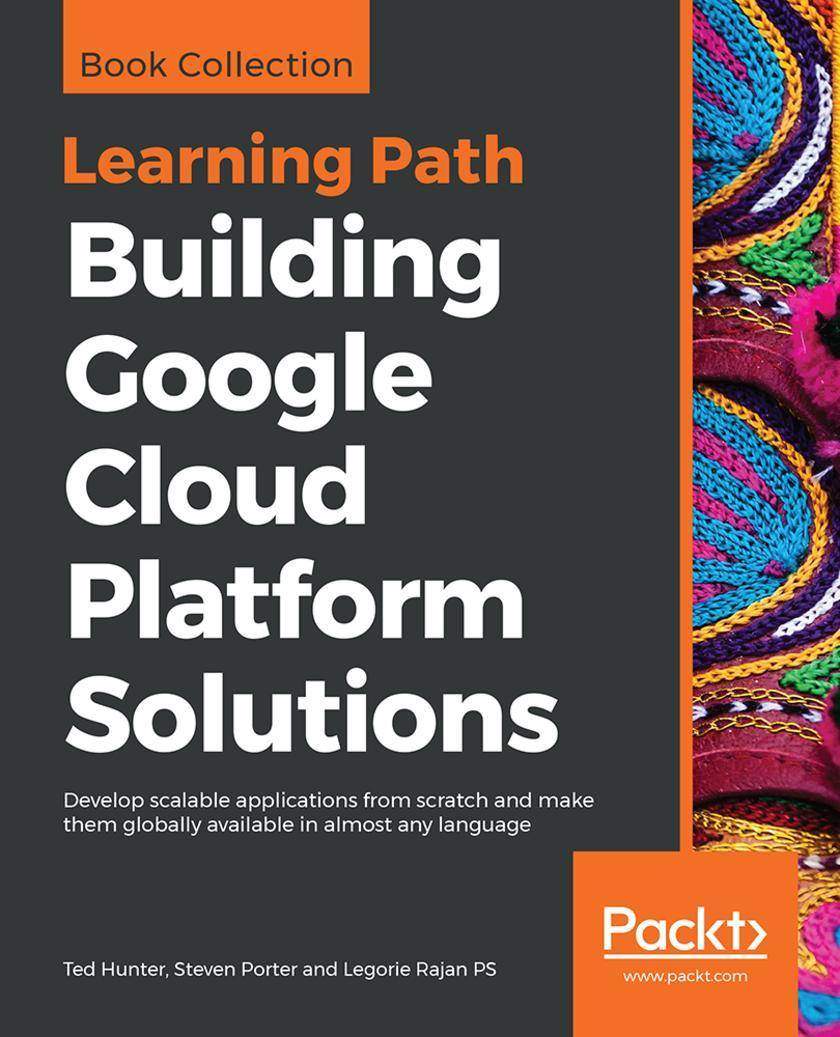
Building Google Cloud Platform Solutions
¥90.46
Build cost-effective and robust cloud solutions with Google Cloud Platform (GCP) using these simple and practical recipes Key Features * Explore the various service offerings of the GCP * Host a Python application on Google Compute Engine * Securely maintain application states with Cloud Storage, Datastore, and Bigtable Book Description GCP is a cloud computing platform with a wide range of products and services that enable you to build and deploy cloud-hosted applications. This Learning Path will guide you in using GCP and designing, deploying, and managing applications on Google Cloud. You will get started by learning how to use App Engine to access Google's scalable hosting and build software that runs on this framework. With the help of Google Compute Engine, you’ll be able to host your workload on virtual machine instances. The later chapters will help you to explore ways to implement authentication and security, Cloud APIs, and command-line and deployment management. As you hone your skills, you’ll understand how to integrate your new applications with various data solutions on GCP, including Cloud SQL, Bigtable, and Cloud Storage. Following this, the book will teach you how to streamline your workflow with tools, including Source Repositories, Container Builder, and Stackdriver. You'll also understand how to deploy and debug services with IntelliJ, implement continuous delivery pipelines, and configure robust monitoring and alerts for your production systems. By the end of this Learning Path, you'll be well versed with GCP’s development tools and be able to develop, deploy, and manage highly scalable and reliable applications. This Learning Path includes content from the following Packt products: * Google Cloud Platform for Developers Ted Hunter and Steven Porter * Google Cloud Platform Cookbook by Legorie Rajan PS What you will learn * Host an application using Google Cloud Functions * Migrate a MySQL database to Cloud Spanner * Configure a network for a highly available application on GCP * Learn simple image processing using Storage and Cloud Functions * Automate security checks using Policy Scanner * Deploy and run services on App Engine and Container Engine * Minimize downtime and mitigate issues with Stackdriver Monitoring and Debugger * Integrate with big data solutions, including BigQuery, Dataflow, and Pub/Sub Who this book is for This Learning Path is for IT professionals, engineers, and developers who want to implement Google Cloud in their organizations. Administrators and architects planning to make their organization more efficient with Google Cloud will also find this Learning Path useful. Basic understanding of GCP and its services is a must.
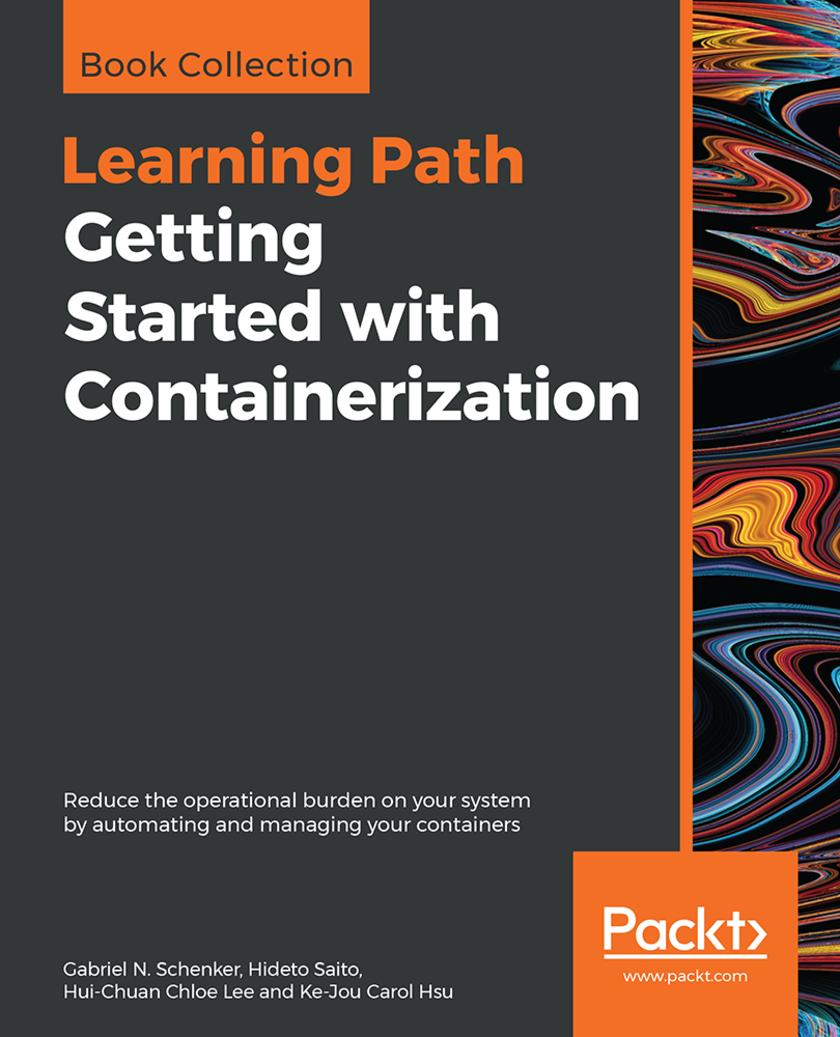
Getting Started with Containerization
¥90.46
Choose the smarter way to learn about containerizing your applications and running them in production. Key Features * Deploy and manage highly scalable, containerized applications with Kubernetes * Build high-availability Kubernetes clusters * Secure your applications via encapsulation, networks, and secrets Book Description Kubernetes is an open source orchestration platform for managing containers in a cluster environment. This Learning Path introduces you to the world of containerization, in addition to providing you with an overview of Docker fundamentals. As you progress, you will be able to understand how Kubernetes works with containers. Starting with creating Kubernetes clusters and running applications with proper authentication and authorization, you'll learn how to create high-availability Kubernetes clusters on Amazon Web Services (AWS), and also learn how to use kubeconfig to manage different clusters. Whether it is learning about Docker containers and Docker Compose, or building a continuous delivery pipeline for your application, this Learning Path will equip you with all the right tools and techniques to get started with containerization. By the end of this Learning Path, you will have gained hands-on experience of working with Docker containers and orchestrators, including SwarmKit and Kubernetes. This Learning Path includes content from the following Packt products: * Kubernetes Cookbook - Second Edition by Hideto Saito, Hui-Chuan Chloe Lee, and Ke-Jou Carol Hsu * Learn Docker - Fundamentals of Docker 18.x by Gabriel N. Schenker What you will learn * Build your own container cluster * Run a highly distributed application with Docker Swarm or Kubernetes * Update or rollback a distributed application with zero downtime * Containerize your traditional or microservice-based application * Build a continuous delivery pipeline for your application * Track metrics and logs for every container in your cluster * Implement container orchestration to streamline deploying and managing applications Who this book is for This beginner-level Learning Path is designed for system administrators, operations engineers, DevOps engineers, and developers who want to get started with Docker and Kubernetes. Although no prior experience with Docker is required, basic knowledge of Kubernetes and containers will be helpful.
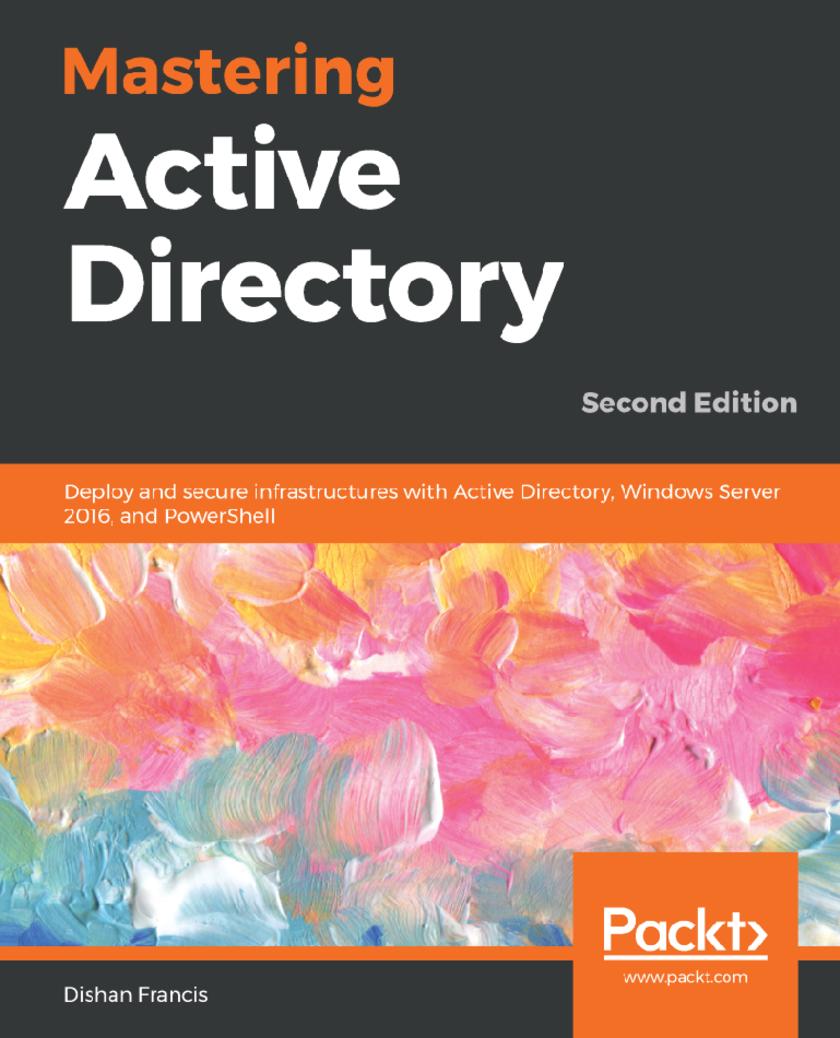
Mastering Active Directory
¥90.46
Become an expert at managing enterprise identity infrastructure by leveraging Active Directory Key Features * Explore the new features in Active Directory Domain Service * Manage your Active Directory services for Windows Server 2016 effectively * Automate administrative tasks in Active Directory using PowerShell Core 6.x Book Description Active Directory (AD) is a centralized and standardized system that automates networked management of user data, security, and distributed resources and enables inter-operation with other directories. This book will first help you brush up on the AD architecture and fundamentals, before guiding you through core components, such as sites, trust relationships, objects, and attributes. You will then explore AD schemas, LDAP, RMS, and security best practices to understand objects and components and how they can be used effectively. Next, the book will provide extensive coverage of AD Domain Services and Federation Services for Windows Server 2016, and help you explore their new features. Furthermore, you will learn to manage your identity infrastructure for a hybrid cloud setup. All this will help you design, plan, deploy, manage operations, and troubleshoot your enterprise identity infrastructure in a secure and effective manner. You’ll later discover Azure AD Module, and learn to automate administrative tasks using PowerShell cmdlets. All along, this updated second edition will cover content based on the latest version of Active Directory, PowerShell 5.1 and LDAP. By the end of this book, you’ll be well versed with best practices and troubleshooting techniques for improving security and performance in identity infrastructures. What you will learn * Design your Hybrid AD environment by evaluating business and technology requirements * Protect sensitive data in a hybrid environment using Azure Information Protection * Explore advanced functionalities of the schema * Learn about Flexible Single Master Operation (FSMO) roles and their placement * Install and migrate Active Directory from older versions to Active Directory 2016 * Control users, groups, and devices effectively * Design your OU structure in the most effective way * Integrate Azure AD with Active Directory Domain Services for a hybrid setup Who this book is for If you are an Active Directory administrator, system administrator, or network professional who has basic knowledge of Active Directory and is looking to become an expert in this topic, this book is for you.
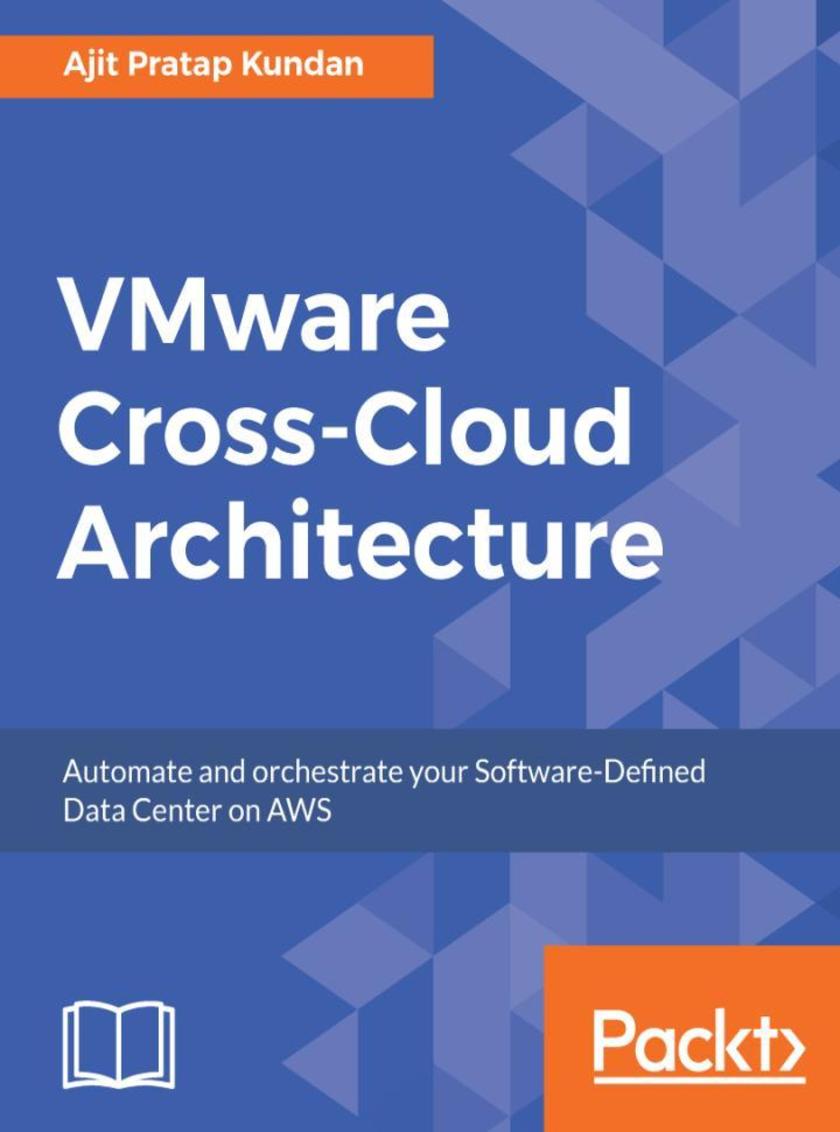
VMware Cross-Cloud Architecture
¥90.46
Enhance your virtualization skills by mastering storage and network virtualization with automation across different Clouds About This Book ? Migrate and build your applications in Hybrid Cloud with VMware Cross Cloud components and services ? Gain in-depth configuration insights of VMware Cross Cloud architecture ? Learn to migrate applications from VMware to AWS and IBM Cloud Who This Book Is For This book is for administrators, Cloud architects and network engineers who want to globalize their infrastructure using VMware and AWS services. An initial setup of workloads and data center is beneficial. What You Will Learn ? Install and configure the Cloud foundation with Cross-Cloud services ? Configure vSphere high availability with the vCenter redundancy setup ? Architect and configure VMware with AWS Cloud ? Deploy VMware components in IBM Soft Layer ? Extend your DR setup with VMware to consume DRaaS ? Design and configure software-defined networking ? Implement compliance regulations to fix violations In Detail Over the past two decades, VMware vSphere has been known as the most trusted and reliable virtualization platform. VMware Cross-Cloud Architecture shows you how to design and configure Cross Cloud Architecture by using VMware Cloud Foundation and vRealize Suite with various use cases across private, public, and hybrid Cloud. This book takes you through everything from a basic understanding of virtualization to advanced aspects of storage and network virtualization, clustering, automation, and management. This book will be your guide to designing all aspects of Cloud. We start with the challenges faced by a traditional data center, define problem statements for you, and then brief you on respective solutions. Moving on, all kinds of virtualization and Cloud offerings from AWS and IBM Soft Layer are introduced and discussed in detail. Then, you'll learn how to design IT infrastructures for new and existing applications with a combination of Cloud Foundation, vRealize Suite, and vSphere enabled with VSAN and NSX. Furthermore, you'll learn how to design and configure high availability, disaster recovery, and apply an appropriate compliance matrix. Toward the end of the book, you will learn how to calculate the TCO/ROI, along with the VMware products packaging and licensing in detail. Style and approach This book follows a step-by-step, practical approach which will help you to have a better understanding of the cloud technology and the steps required to quickly reap its benefits while at the same time lowering your IT implementation risk and cost.
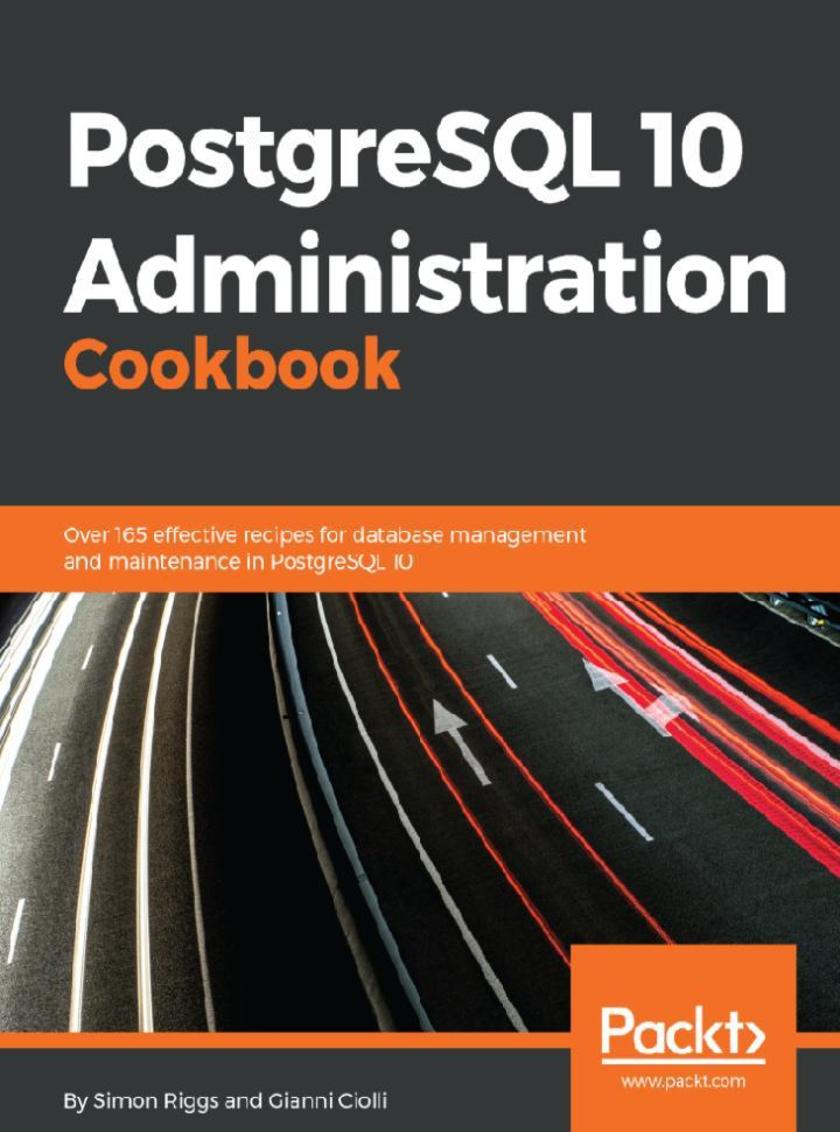
PostgreSQL 10 Administration Cookbook
¥90.46
A practical guide to administer, monitor and replicate your PostgreSQL 10 database About This Book ? Get to grips with the capabilities of PostgreSQL 10 to administer your database more efficiently ? Monitor, tune, secure and protect your database for optimal performance ? A step-by-step, recipe-based guide to help you tackle any problem in PostgreSQL 10 administration with ease Who This Book Is For This book is for database administrators, data architects, developers, or anyone with an interest in planning for, or running, live production databases using PostgreSQL. It is most suited to those looking for hands-on solutions to any problem associated with PostgreSQL administration. What You Will Learn ? Get to grips with the newly released PostgreSQL 10 features to improve database performance and reliability ? Manage open source PostgreSQL versions 10 on various platforms. ? Explore best practices for planning and designing live databases ? Select and implement robust backup and recovery techniques in PostgreSQL 10 ? Explore concise and clear guidance on replication and high availability ? Discover advanced technical tips for experienced users In Detail PostgreSQL is a powerful, open source database management system with an enviable reputation for high performance and stability. With many new features in its arsenal, PostgreSQL 10 allows users to scale up their PostgreSQL infrastructure. This book takes a step-by-step, recipe-based approach to effective PostgreSQL administration. Throughout this book, you will be introduced to these new features such as logical replication, native table partitioning, additional query parallelism, and much more. You will learn how to tackle a variety of problems that are basically the pain points for any database administrator - from creating tables to managing views, from improving performance to securing your database. More importantly, the book pays special attention to topics such as monitoring roles, backup, and recovery of your PostgreSQL 10 database, ensuring high availability, concurrency, and replication. By the end of this book, you will know everything you need to know to be the go-to PostgreSQL expert in your organization. Style and approach The book is a step by step guide with example-driven recipes, focused on the new features of the latest PostgreSQL version10. This book will serve as a specific guide to understand and leverage useful PostgreSQL functionalities to create better and more efficient databases.
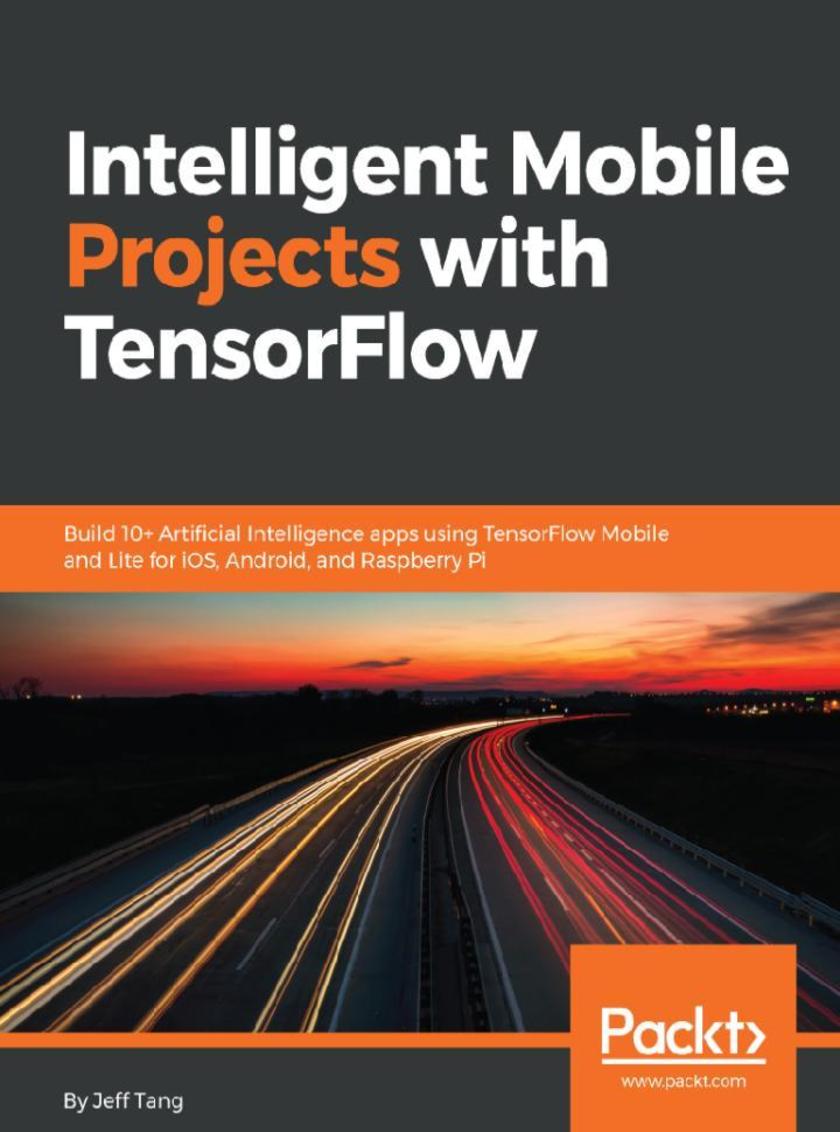
Intelligent Mobile Projects with TensorFlow
¥90.46
Create Deep Learning and Reinforcement Learning apps for multiple platforms with TensorFlow About This Book ? Build TensorFlow-powered AI applications for mobile and embedded devices ? Learn modern AI topics such as computer vision, NLP, and deep reinforcement learning ? Get practical insights and exclusive working code not available in the TensorFlow documentation Who This Book Is For If you're an iOS/Android developer interested in building and retraining others' TensorFlow models and running them in your mobile apps, or if you're a TensorFlow developer and want to run your new and amazing TensorFlow models on mobile devices, this book is for you. You'll also benefit from this book if you're interested in TensorFlow Lite, Core ML, or TensorFlow on Raspberry Pi. What You Will Learn ? Classify images with transfer learning ? Detect objects and their locations ? Transform pictures with amazing art styles ? Understand simple speech commands ? Describe images in natural language ? Recognize drawing with Convolutional Neural Network and Long Short-Term Memory ? Predict stock price with Recurrent Neural Network in TensorFlow and Keras ? Generate and enhance images with generative adversarial networks ? Build AlphaZero-like mobile game app in TensorFlow and Keras ? Use TensorFlow Lite and Core ML on mobile ? Develop TensorFlow apps on Raspberry Pi that can move, see, listen, speak, and learn In Detail As a developer, you always need to keep an eye out and be ready for what will be trending soon, while also focusing on what's trending currently. So, what's better than learning about the integration of the best of both worlds, the present and the future? Artificial Intelligence (AI) is widely regarded as the next big thing after mobile, and Google's TensorFlow is the leading open source machine learning framework, the hottest branch of AI. This book covers more than 10 complete iOS, Android, and Raspberry Pi apps powered by TensorFlow and built from scratch, running all kinds of cool TensorFlow models offline on-device: from computer vision, speech and language processing to generative adversarial networks and AlphaZero-like deep reinforcement learning. You’ll learn how to use or retrain existing TensorFlow models, build your own models, and develop intelligent mobile apps running those TensorFlow models. You'll learn how to quickly build such apps with step-by-step tutorials and how to avoid many pitfalls in the process with lots of hard-earned troubleshooting tips. Style and approach This book takes a practical, project-based approach to teach specifics of mobile development with TensorFlow. Using a reader-friendly approach, this book will provide detailed instructions and also discuss the broader context covered within.
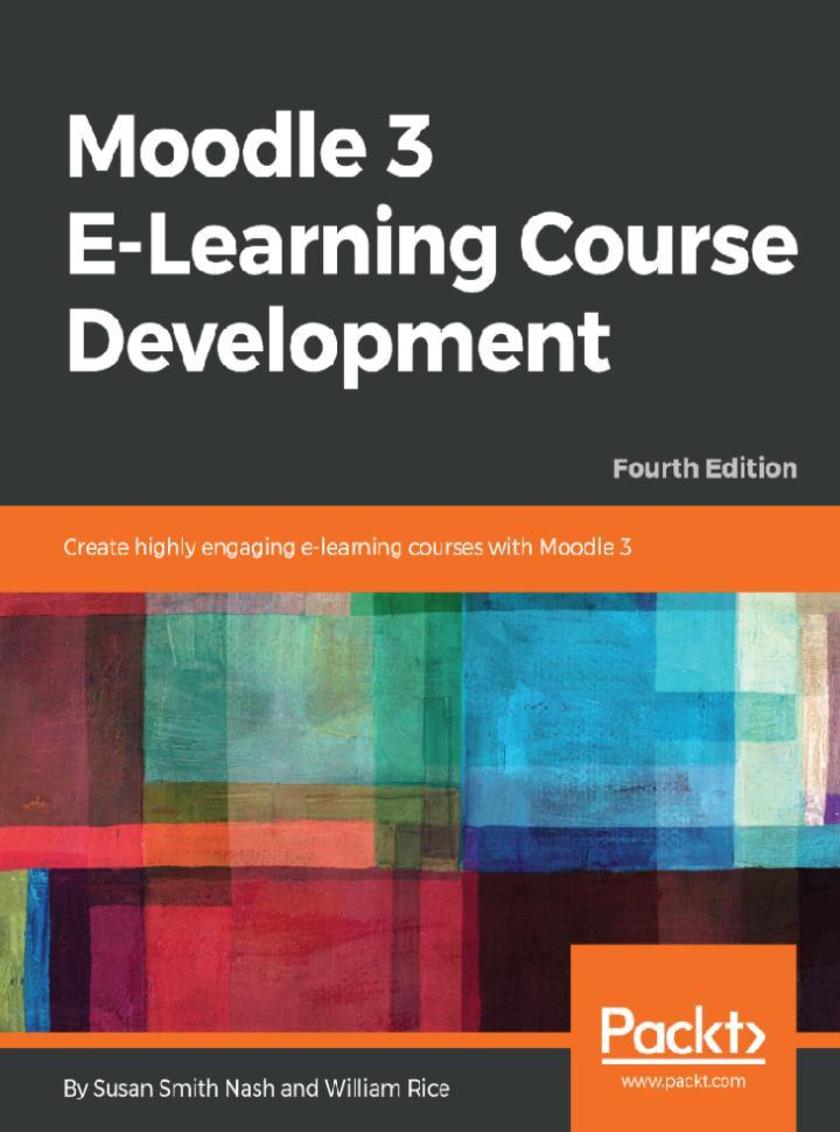
Moodle 3 E-Learning Course Development
¥90.46
A complete guide on course development and delivery using Moodle 3.x About This Book ? Get the best out of the latest Moodle 3 framework to ensure successful learning ? Gain experience in creating different kinds of courses ? Create your first Moodle VR app using the Moodle VR toolset Who This Book Is For This book is for anyone who wants to get the best out of Moodle. As a beginner, this is a thorough guide for you to understand how the software works, with great ideas for getting off to a good start with your first course. Some experience of working with e-learning systems will be beneficial. Experienced Moodle users will find powerful insights into developing successful and educational courses. What You Will Learn ? Know what Moodle does and how it supports your teaching strategies ? Install Moodle on your computer and navigate your way around it ? Understand all of Moodle's learning features ? Monitor how learners interact with your site using site statistics ? Add multimedia content to your site ? Allow students to enroll themselves or invite other students to join a course In Detail Moodle is a learning platform or Course Management System (CMS) that is easy to install and use, but the real challenge is in developing a learning process that leverages its power and maps the learning objectives to content and assessments for an integrated and effective course. Moodle 3 E-Learning Course Development guides you through meeting that challenge in a practical way. This latest edition will show you how to add static learning material, assessments, and social features such as forum-based instructional strategy, a chat module, and forums to your courses so that students reach their learning potential. Whether you want to support traditional class teaching or lecturing, or provide complete online and distance e-learning courses, this book will prove to be a powerful resource throughout your use of Moodle. You’ll learn how to create and integrate third-party plugins and widgets in your Moodle app, implement site permissions and user accounts, and ensure the security of content and test papers. Further on, you’ll implement PHP scripts that will help you create customized UIs for your app. You’ll also understand how to create your first Moodle VR e-learning app using the latest VR learning experience that Moodle 3 has to offer. By the end of this book, you will have explored the decisions, design considerations, and thought processes that go into developing a successful course. Style and approach Packed with clear step-by-step instructions, plenty of screenshots, and thorough explanations, this book guides you through the many features and options that you have to choose from when using Moodle 3.
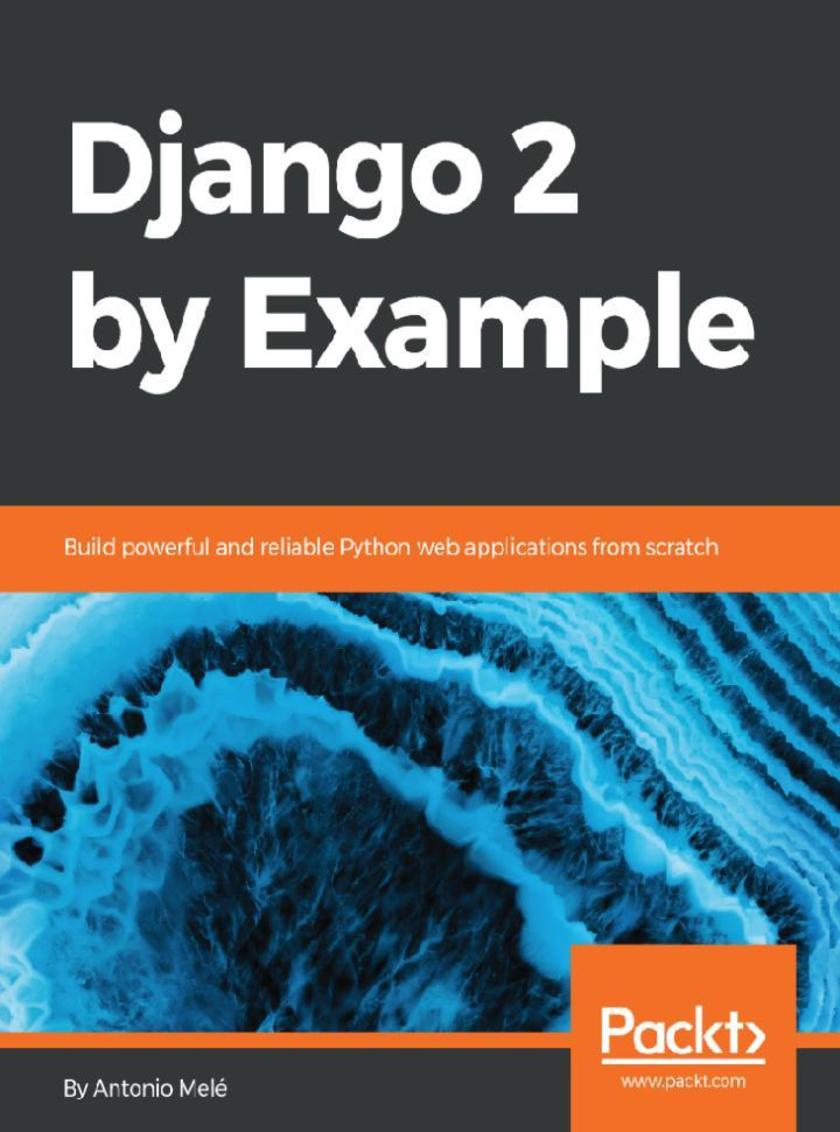
Django 2 by Example
¥90.46
Learn Django 2.0 with four end-to-end projects About This Book ? Learn Django by building real-world web applications from scratch ? Develop powerful web applications quickly using the best coding practices ? Integrate other technologies into your application with clear, step-by-step explanations and comprehensive example code Who This Book Is For If you are a web developer who wants to see how to build professional sites with Django, this book is for you. You will need a basic knowledge of Python, HTML, and JavaScript, but you don't need to have worked with Django before. What You Will Learn ? Build practical, real-world web applications with Django ? Use Django with other technologies, such as Redis and Celery ? Develop pluggable Django applications ? Create advanced features, optimize your code, and use the cache framework ? Add internationalization to your Django projects ? Enhance your user experience using JavaScript and AJAX ? Add social features to your projects ? Build RESTful APIs for your applications In Detail If you want to learn about the entire process of developing professional web applications with Django, then this book is for you. This book will walk you through the creation of four professional Django projects, teaching you how to solve common problems and implement best practices. You will learn how to build a blog application, a social image-bookmarking website, an online shop, and an e-learning platform. The book will teach you how to enhance your applications with AJAX, create RESTful APIs, and set up a production environment for your Django projects. The book walks you through the creation of real-world applications, while solving common problems and implementing best practices. By the end of this book, you will have a deep understanding of Django and how to build advanced web applications Style and approach This easy-to-follow guide takes you through the process of building four different production-ready Django projects with a simple step-by-step approach.
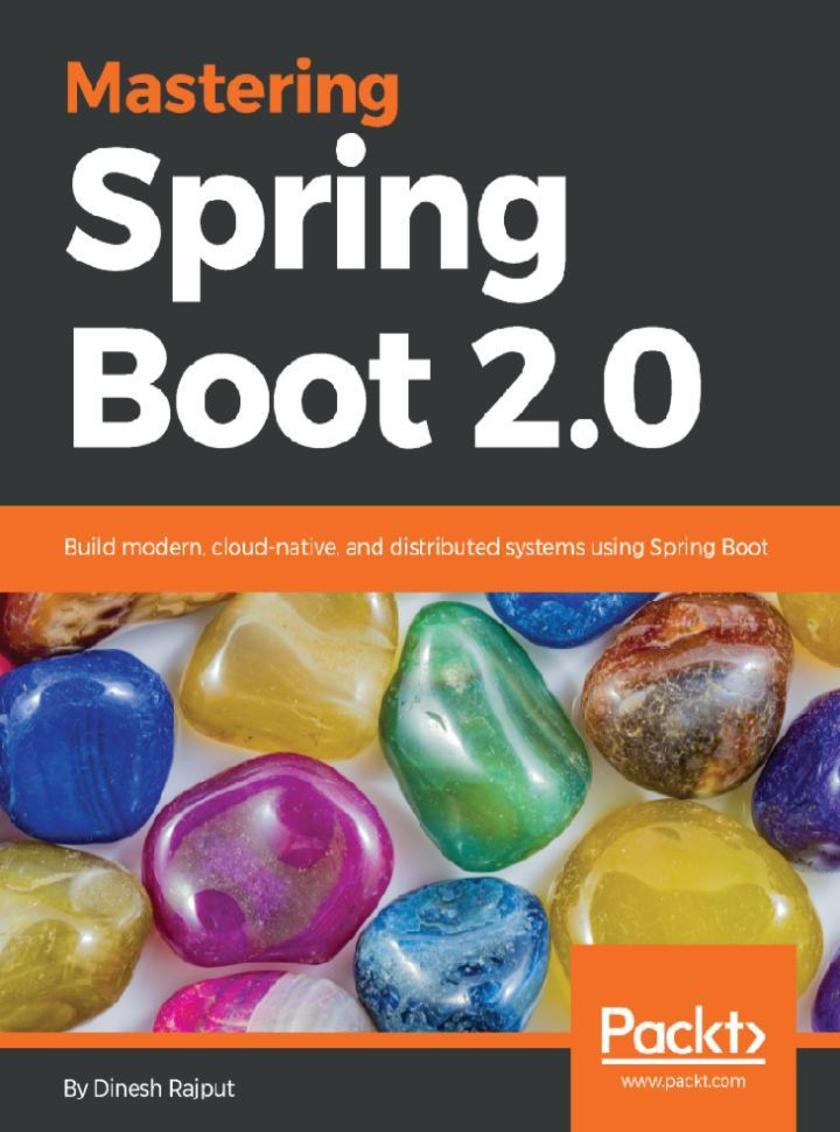
Mastering Spring Boot 2.0
¥90.46
Learn to develop, test, and deploy your Spring Boot distributed application and explore various best practices. About This Book ? Build and deploy your microservices architecture in the cloud ? Build event-driven resilient systems using Hystrix and Turbine ? Explore API management tools such as KONG and API documentation tools such as Swagger Who This Book Is For The book is targeted at experienced Spring and Java developers who have a basic knowledge of working with Spring Boot. The reader should be familiar with Spring Boot basics, and aware of its benefits over traditional Spring Framework-based applications. What You Will Learn ? Build logically structured and highly maintainable Spring Boot applications ? Configure RESTful microservices using Spring Boot ? Make the application production and operation-friendly with Spring Actuator ? Build modern, high-performance distributed applications using cloud patterns ? Manage and deploy your Spring Boot application to the cloud (AWS) ? Monitor distributed applications using log aggregation and ELK In Detail Spring is one of the best frameworks on the market for developing web, enterprise, and cloud ready software. Spring Boot simplifies the building of complex software dramatically by reducing the amount of boilerplate code, and by providing production-ready features and a simple deployment model. This book will address the challenges related to power that come with Spring Boot's great configurability and flexibility. You will understand how Spring Boot configuration works under the hood, how to overwrite default configurations, and how to use advanced techniques to prepare Spring Boot applications to work in production. This book will also introduce readers to a relatively new topic in the Spring ecosystem – cloud native patterns, reactive programming, and applications. Get up to speed with microservices with Spring Boot and Spring Cloud. Each chapter aims to solve a specific problem or teach you a useful skillset. By the end of this book, you will be proficient in building and deploying your Spring Boot application. Style and approach The book takes a practical, example-driven approach to teaching you all the advanced features of Spring Boot 2.0
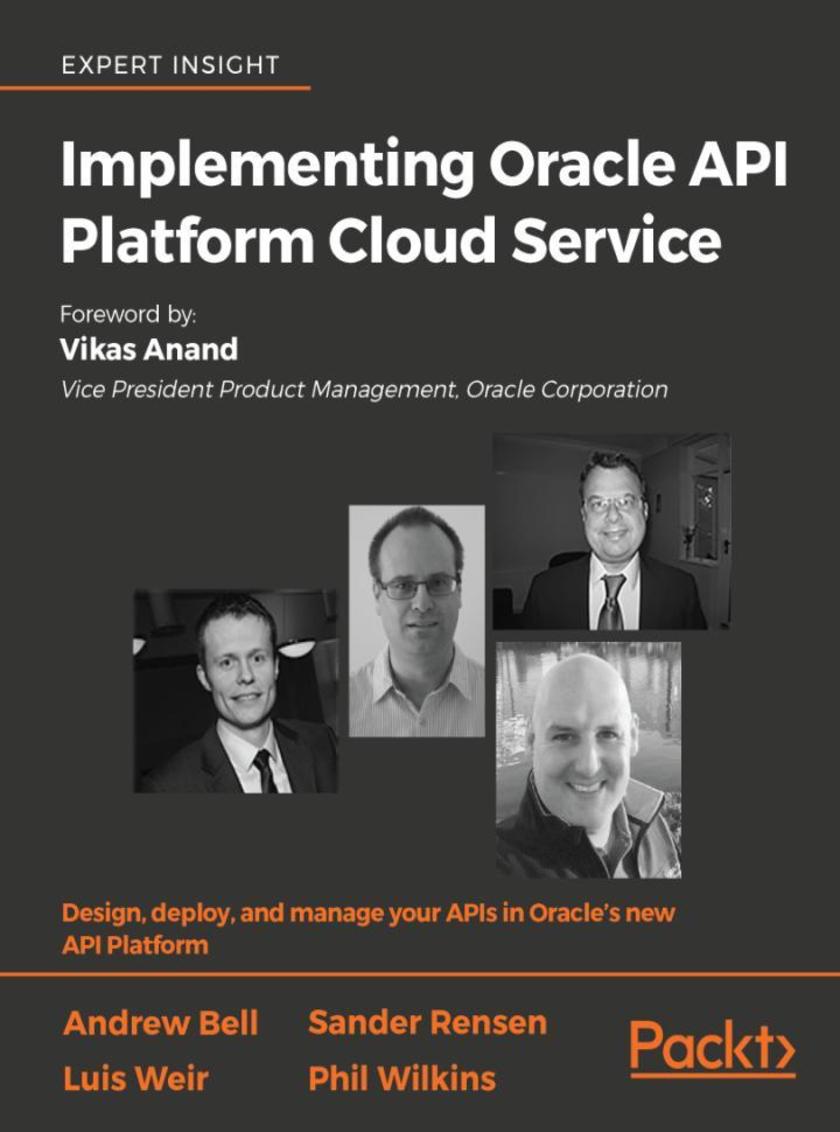
Implementing Oracle API Platform Cloud Service
¥90.46
Work with the newest Oracle API Platform Cloud Service to interface with the increasingly complex array of services your clients want. About This Book ? Understand the architecture and functionality of the new Oracle API Cloud Service Platform ? Understand typical use cases for the new platform and how it can work for you ? Design your own APIs, then deploy and customize your APIs ? Implement Oauth 2.0 policy and custom policies ? Migrate from Oracle 12c solutions to the new Oracle API platform Who This Book Is For This book is for all Oracle developers who are working or plan to work with the Oracle API Platform Cloud Service. What You Will Learn ? Get an overview of the Oracle API Cloud Service Platform ? See typical use cases of the Oracle API Cloud Service Platform ? Design your own APIs using Apiary ? Build and run microservices ? Set up API gateways with the new API platform from Oracle ? Customize developer portals ? Configuration management ? Implement Oauth 2.0 policies ? Implement custom policies ? Get a policy SDK overview ? Transition from Oracle API Management 12c to the new Oracle API platform In Detail Implementing Oracle API Platform Cloud Service moves from theory to practice using the newest Oracle API management platform. This critical new platform for Oracle developers allows you to interface the complex array of services your clients expect in the modern world. First, you'll learn about Oracle’s new platform and get an overview of it, then you'll see a use case showing the functionality and use of this new platform for Oracle customers. Next, you’ll see the power of Apiary and begin designing your own APIs. From there, you’ll build and run microservices and set up the Oracle API gateways. Moving on, you’ll discover how to customize the developer portal and publish your own APIs. You’ll spend time looking at configuration management on the new platform, and implementing the Oauth 2.0 policy, as well as custom policies. The latest finance modules from Oracle will be examined, with some of the third party alternatives in sight as well. This broad-scoped book completes your journey with a clear examination of how to transition APIs from Oracle API Management 12c to the new Oracle API Platform, so that you can step into the future confidently. Style and approach This book provides comprehensive coverage of all aspects of Oracle API development using the new Oracle API Platform Cloud Service. All aspects of the new Oracle API Platform Cloud Service are considered and your practical, working Oracle situations are examined to give you have hands-on experience using the new API platform from Oracle.
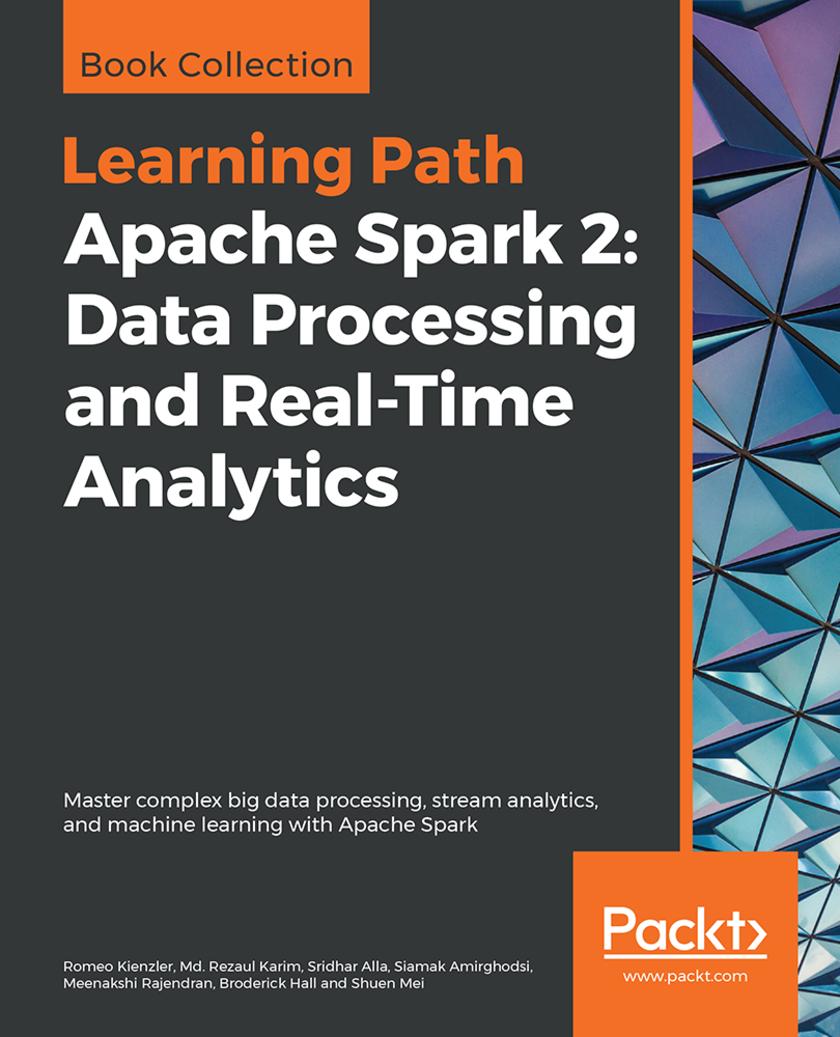
Apache Spark 2: Data Processing and Real-Time Analytics
¥90.46
Build efficient data flow and machine learning programs with this flexible, multi-functional open-source cluster-computing framework Key Features *Master the art of real-time big data processing and machine learning *Explore a wide range of use-cases to analyze large data *Discover ways to optimize your work by using many features of Spark 2.x and Scala Book Description Apache Spark is an in-memory, cluster-based data processing system that provides a wide range of functionalities such as big data processing, analytics, machine learning, and more. With this Learning Path, you can take your knowledge of Apache Spark to the next level by learning how to expand Spark's functionality and building your own data flow and machine learning programs on this platform. You will work with the different modules in Apache Spark, such as interactive querying with Spark SQL, using DataFrames and datasets, implementing streaming analytics with Spark Streaming, and applying machine learning and deep learning techniques on Spark using MLlib and various external tools. By the end of this elaborately designed Learning Path, you will have all the knowledge you need to master Apache Spark, and build your own big data processing and analytics pipeline quickly and without any hassle. This Learning Path includes content from the following Packt products: *Mastering Apache Spark 2.x by Romeo Kienzler *Scala and Spark for Big Data Analytics by Md. Rezaul Karim, Sridhar Alla *Apache Spark 2.x Machine Learning Cookbook by Siamak Amirghodsi, Meenakshi Rajendran, Broderick Hall, Shuen MeiCookbook What you will learn *Get to grips with all the features of Apache Spark 2.x *Perform highly optimized real-time big data processing *Use ML and DL techniques with Spark MLlib and third-party tools *Analyze structured and unstructured data using SparkSQL and GraphX *Understand tuning, debugging, and monitoring of big data applications *Build scalable and fault-tolerant streaming applications *Develop scalable recommendation engines Who this book is for If you are an intermediate-level Spark developer looking to master the advanced capabilities and use-cases of Apache Spark 2.x, this Learning Path is ideal for you. Big data professionals who want to learn how to integrate and use the features of Apache Spark and build a strong big data pipeline will also find this Learning Path useful. To grasp the concepts explained in this Learning Path, you must know the fundamentals of Apache Spark and Scala.
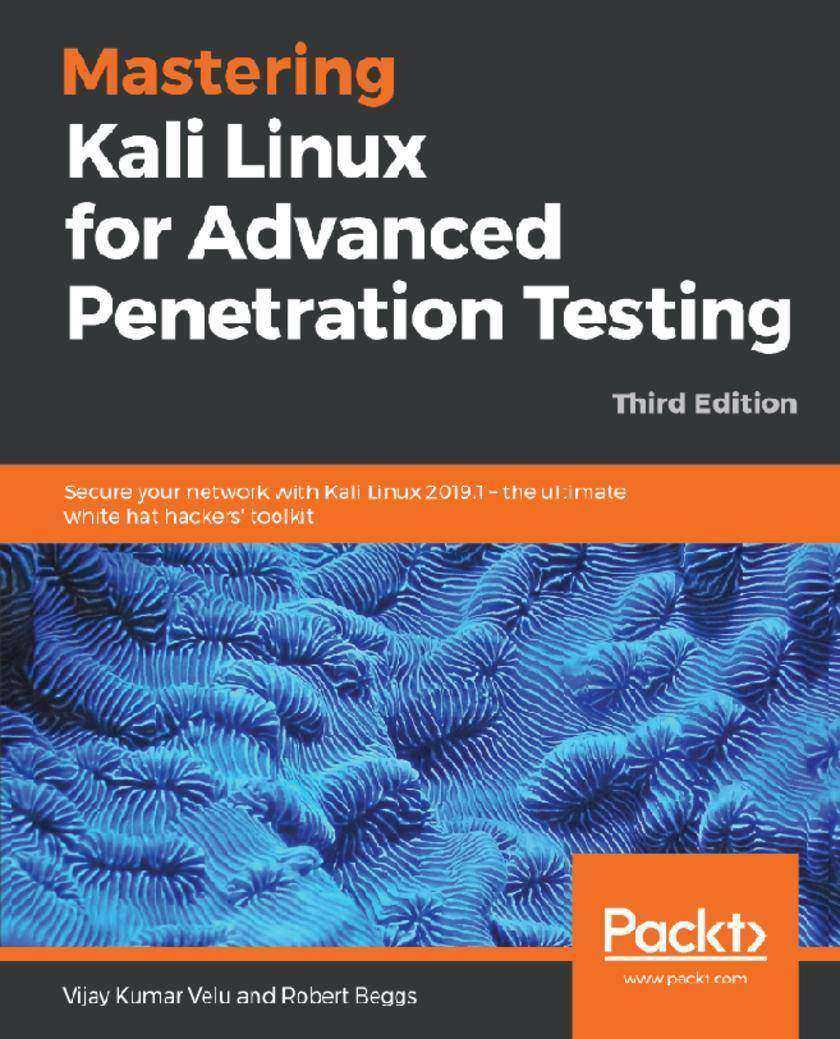
Mastering Kali Linux for Advanced Penetration Testing
¥90.46
A practical guide to testing your infrastructure security with Kali Linux, the preferred choice of pentesters and hackers Key Features * Employ advanced pentesting techniques with Kali Linux to build highly secured systems * Discover various stealth techniques to remain undetected and defeat modern infrastructures * Explore red teaming techniques to exploit secured environment Book Description This book takes you, as a tester or security practitioner, through the reconnaissance, vulnerability assessment, exploitation, privilege escalation, and post-exploitation activities used by pentesters. To start with, you'll use a laboratory environment to validate tools and techniques, along with an application that supports a collaborative approach for pentesting. You'll then progress to passive reconnaissance with open source intelligence and active reconnaissance of the external and internal infrastructure. You'll also focus on how to select, use, customize, and interpret the results from different vulnerability scanners, followed by examining specific routes to the target, which include bypassing physical security and the exfiltration of data using a variety of techniques. You'll discover concepts such as social engineering, attacking wireless networks, web services, and embedded devices. Once you are confident with these topics, you'll learn the practical aspects of attacking user client systems by backdooring with fileless techniques, followed by focusing on the most vulnerable part of the network – directly attacking the end user. By the end of this book, you'll have explored approaches for carrying out advanced pentesting in tightly secured environments, understood pentesting and hacking techniques employed on embedded peripheral devices. What you will learn * Configure the most effective Kali Linux tools to test infrastructure security * Employ stealth to avoid detection in the infrastructure being tested * Recognize when stealth attacks are being used against your infrastructure * Exploit networks and data systems using wired and wireless networks as well as web services * Identify and download valuable data from target systems * Maintain access to compromised systems * Use social engineering to compromise the weakest part of the network - the end users Who this book is for This third edition of Mastering Kali Linux for Advanced Penetration Testing is for you if you are a security analyst, pentester, ethical hacker, IT professional, or security consultant wanting to maximize the success of your infrastructure testing using some of the advanced features of Kali Linux. Prior exposure of penetration testing and ethical hacking basics will be helpful in making the most out of this book.
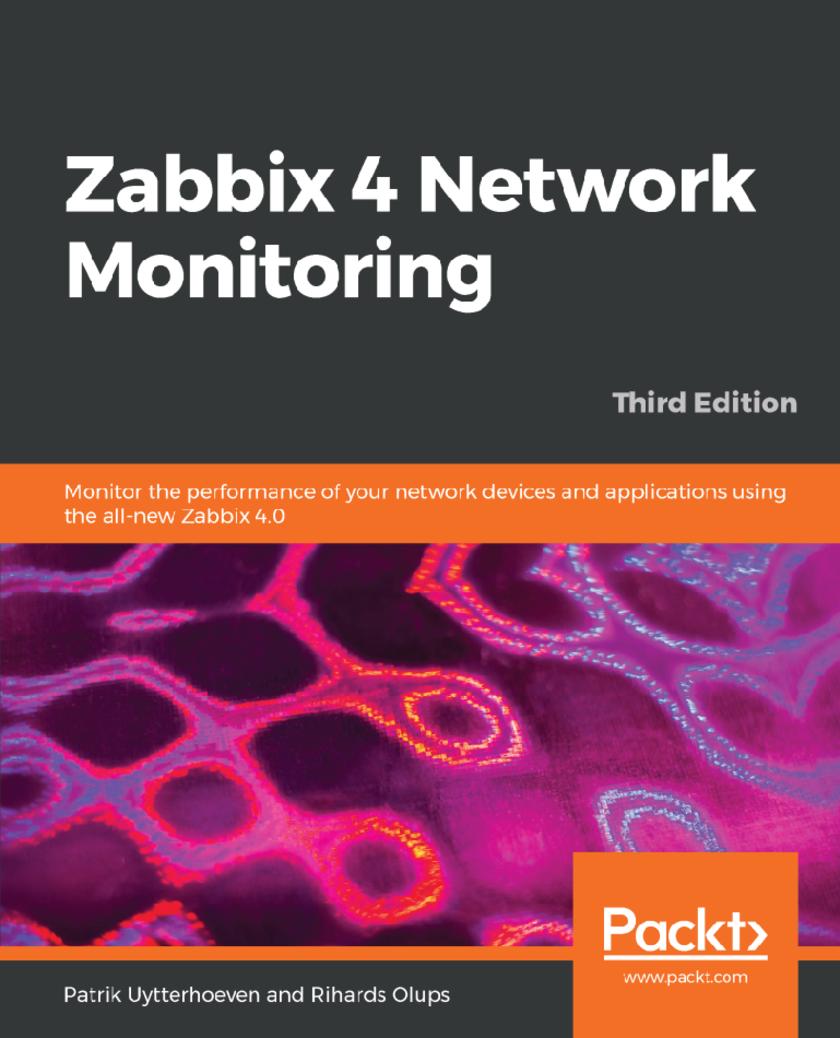
Zabbix 4 Network Monitoring
¥90.46
Gather detailed statistics and deploy impressive business solutions with Zabbix 4.0 Key Features *Experience the full impact of Zabbix 4.0, a useful and increasingly popular tool *Enhance your network’s performance and manage hosts and systems *A step-by-step guide to smarter network monitoring Book Description Zabbix 4 Network Monitoring is the perfect starting point for monitoring the performance of your network devices and applications with Zabbix. Even if you’ve never used a monitoring solution before, this book will get you up and running quickly. You’ll learn to monitor more sophisticated operations with ease and soon feel in complete control of your network, ready to meet any challenges you might face. Starting with the installation, you will discover the new features in Zabbix 4.0. You will then get to grips with native Zabbix agents and Simple Network Management Protocol (SNMP) devices. You will also explore Zabbix's integrated functionality for monitoring Java application servers and VMware. This book also covers notifications, permission management, system maintenance, and troubleshooting, so you can be confident that every potential challenge and task is under your control. If you're working with larger environments, you'll also be able to find out more about distributed data collection using Zabbix proxies. Once you're confident and ready to put these concepts into practice, you will understand how to optimize and improve performance. Troubleshooting network issues is vital for anyone working with Zabbix, so the book also helps you work through any technical snags and glitches you might face. By the end of this book, you will have learned more advanced techniques to fine-tune your system and make sure it is in a healthy state. What you will learn *Install Zabbix server and an agent from source *Manage hosts, users, and permissions while acting upon monitored conditions *Visualize data with the help of ad hoc graphs, custom graphs, and maps *Simplify complex configurations and learn to automate them *Monitor everything from web pages to IPMI devices and Java applications to VMware stats *Configure Zabbix to send alerts including problem severity and time periods *Troubleshoot any network issue Who this book is for If you're new to Zabbix look no further than this book. Zabbix 4 Network Monitoring is for system and network administrators who are looking to put their knowledge to work with Zabbix 4.0.
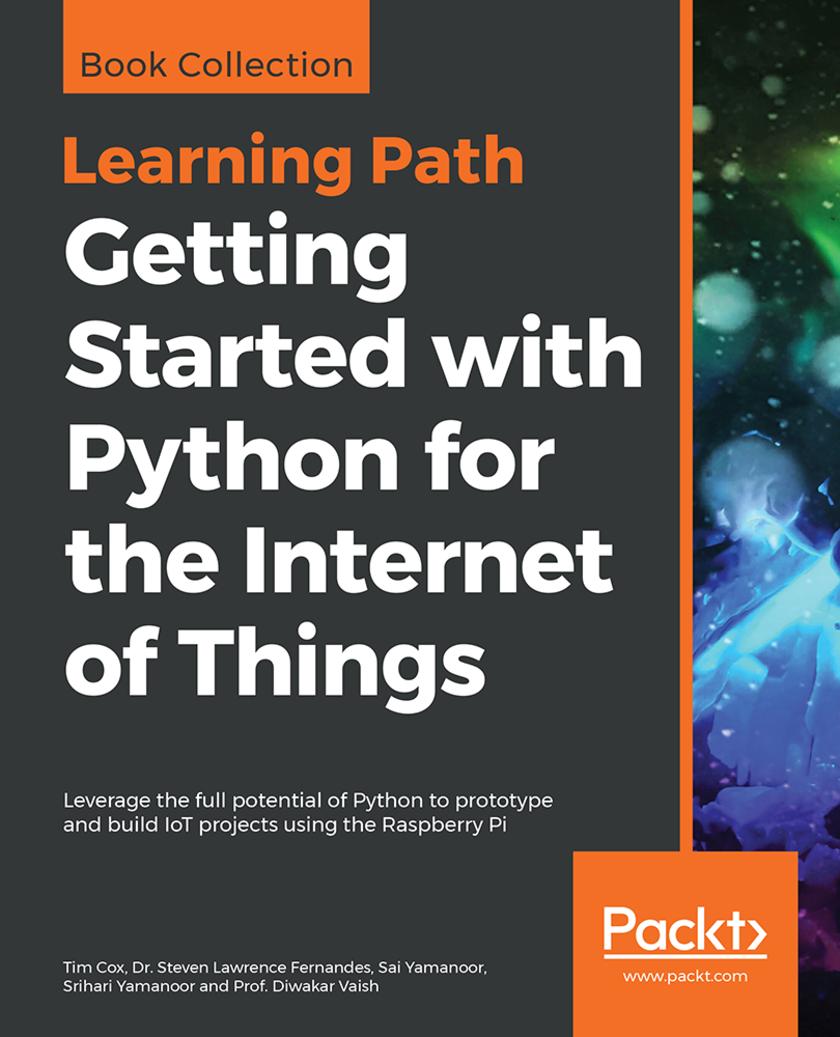
Getting Started with Python for the Internet of Things
¥90.46
Build clever, collaborative, and powerful automation systems with the Raspberry Pi and Python. Key Features * Create your own Pi-Rover or Pi-Hexipod robots * Develop practical applications in Python using Raspberry Pi * Build your own Jarvis, a highly advanced computerized AI Book Description This Learning Path takes you on a journey in the world of robotics and teaches you all that you can achieve with Raspberry Pi and Python. It teaches you to harness the power of Python with the Raspberry Pi 3 and the Raspberry Pi zero to build superlative automation systems that can transform your business. You will learn to create text classifiers, predict sentiment in words, and develop applications with the Tkinter library. Things will get more interesting when you build a human face detection and recognition system and a home automation system in Python, where different appliances are controlled using the Raspberry Pi. With such diverse robotics projects, you'll grasp the basics of robotics and its functions, and understand the integration of robotics with the IoT environment. By the end of this Learning Path, you will have covered everything from configuring a robotic controller, to creating a self-driven robotic vehicle using Python. * Raspberry Pi 3 Cookbook for Python Programmers - Third Edition by Tim Cox, Dr. Steven Lawrence Fernandes * Python Programming with Raspberry Pi by Sai Yamanoor, Srihari Yamanoor * Python Robotics Projects by Prof. Diwakar Vaish What you will learn * Build text classifiers and predict sentiment in words with the Tkinter library * Develop human face detection and recognition systems * Create a neural network module for optical character recognition * Build a mobile robot using the Raspberry Pi as a controller * Understand how to interface sensors, actuators, and LED displays work * Apply machine learning techniques to your models * Interface your robots with Bluetooth Who this book is for This Learning Path is specially designed for Python developers who want to take their skills to the next level by creating robots that can enhance people’s lives. Familiarity with Python and electronics will aid understanding the concepts in this Learning Path.
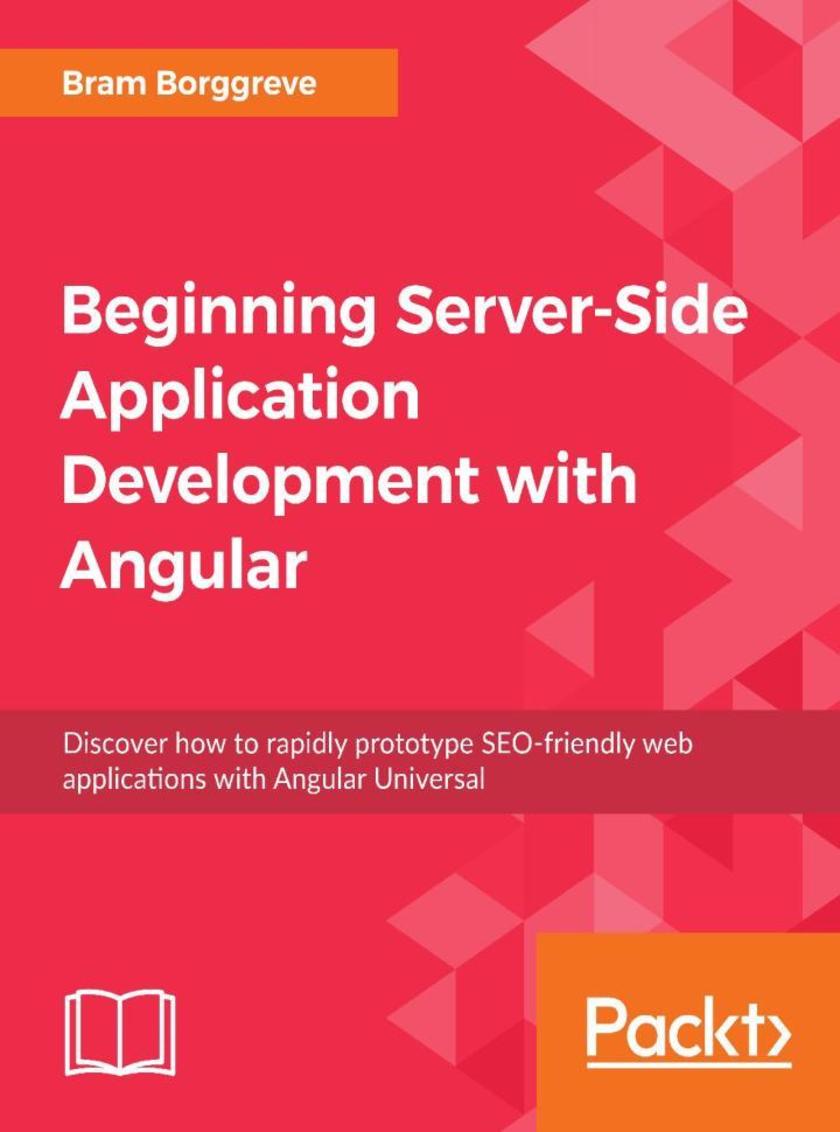
Beginning Server-Side Application Development with Angular
¥90.46
Discover how to rapidly prototype SEO-friendly web applications with Angular Universal About This Book : ? Rapidly build an application that's optimized for search performance ? Develop service workers to make your application truly progressive ? Automatically update metadata and load in content from external APIs Who This Book Is For : This book is ideal for experienced front-end developers who are looking to quickly work through an intelligent example that demonstrates all the key features of server-side development with Angular. You'll need some prior exposure to Angular, as we skim over the basics and get straight to work. What You Will Learn : ? Use the official tools provided by Angular to build an SEO-friendly application ? Create a dynamic web application that maps to current Angular best practices ? Manage your Angular applications with Angular CLI ? Implement server-side rendering for your future web application projects ? Configure service workers to automatically update your application in the background In Detail : Equip yourself with the skills required to create modern, progressive web applications that load quickly and efficiently. This fast-paced guide to server-side Angular leads you through an example application that uses Angular Universal to render application pages on the server, rather than the client. You'll learn how to serve your users views that load instantly, while reaping all the SEO benefits of improved page indexing. With differences of just 200 milliseconds in performance having a measurable impact on your users, it's more important than ever to get server-side right. Style and approach : With this book, you'll be equipped to create modern, SEO-friendly web apps with best practices using Angular CLI. This book focuses on creating a progressive web app using Angular that is optimized for search engines.
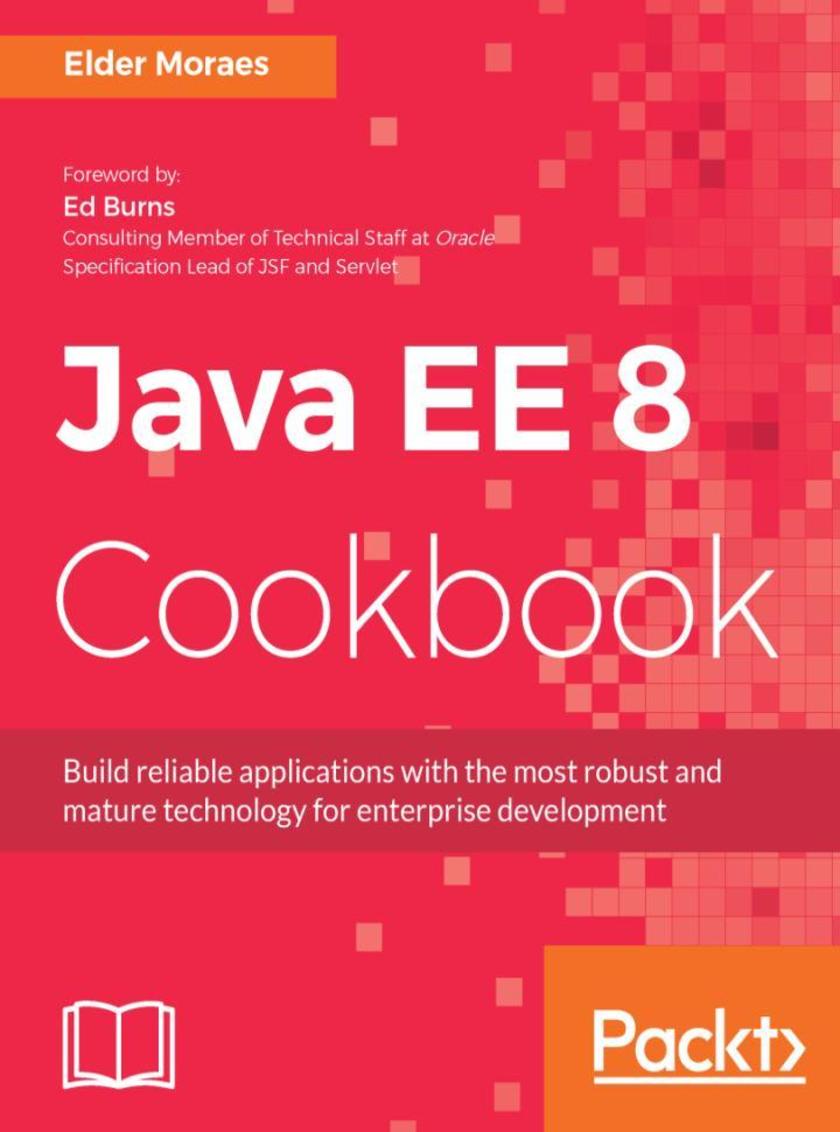
Java EE 8 Cookbook
¥90.46
A practical guide for building effective enterprise solutions with Java EE 8 About This Book ? Recipes to get you up-and-running with Java EE 8 application development ? Learn how to apply the major Java EE 8 APIs and specifications ? Implement microservices and Reactive programming with Java EE 8 Who This Book Is For This book is for developers who want to become proficient with Java EE 8 for their enterprise application development. Basic knowledge of Java is assumed What You Will Learn ? Actionable information on the new features of Java EE 8 ? Using the most important APIs with real and working code ? Building server side applications, web services, and web applications ? Deploying and managing your application using the most important Java EE servers ? Building and deploying microservices using Java EE 8 ? Building Reactive application by joining Java EE APIs and core Java features ? Moving your application to the cloud using containers ? Practical ways to improve your projects and career through community involvement In Detail Java EE is a collection of technologies and APIs to support Enterprise Application development. The choice of what to use and when can be dauntingly complex for any developer. This book will help you master this. Packed with easy to follow recipes, this is your guide to becoming productive with Java EE 8. You will begin by seeing the latest features of Java EE 8, including major Java EE 8 APIs and specifications such as JSF 2.3, and CDI 2.0, and what they mean for you. You will use the new features of Java EE 8 to implement web-based services for your client applications. You will then learn to process the Model and Streaming APIs using JSON-P and JSON-B and will learn to use the Java Lambdas support offered in JSON-P. There are more recipes to fine-tune your RESTful development, and you will learn about the Reactive enhancements offered by the JAX-RS 2.1 specification. Later on, you will learn about the role of multithreading in your enterprise applications and how to integrate them for transaction handling. This is followed by implementing microservices with Java EE and the advancements made by Java EE for cloud computing. The final set of recipes shows you how take advantage of the latest security features and authenticate your enterprise application. At the end of the book, the Appendix shows you how knowledge sharing can change your career and your life. Style and approach Task based learning guide to help ease application development with Java EE.




 购物车
购物车 个人中心
个人中心



